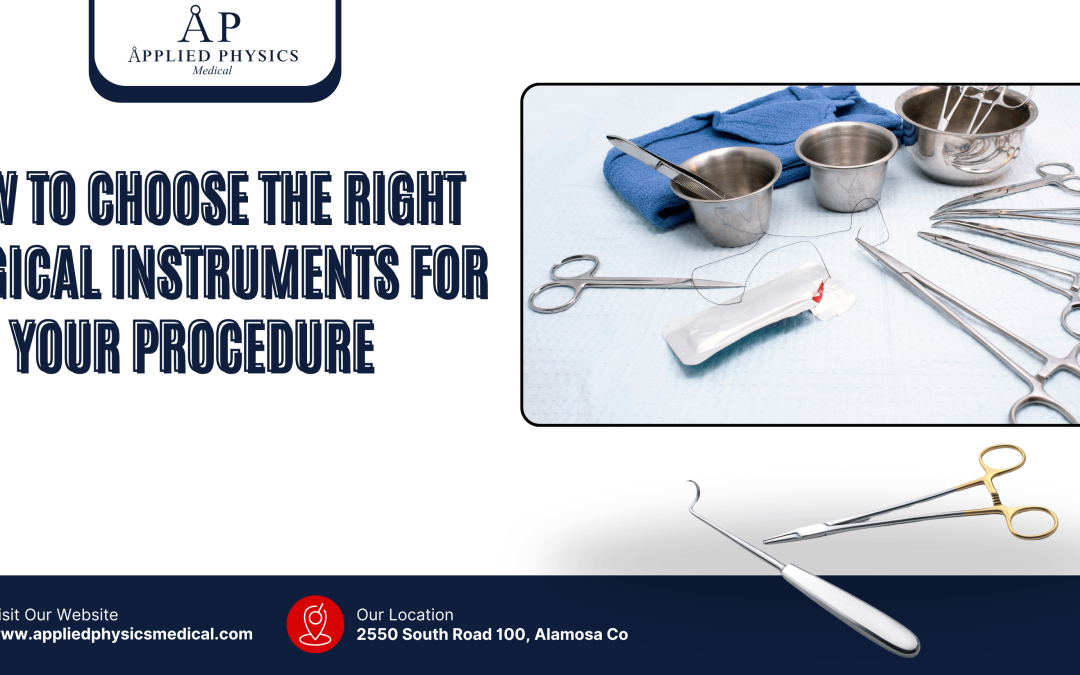Introduction
Surgical instruments are essential tools that facilitate various medical procedures, ranging from minor surgeries to complex operations. They can be broadly categorized into several types, including cutting instruments, grasping instruments, clamping instruments, and suturing instruments. Cutting instruments, such as scalpels and scissors, are designed to incise tissues with precision.
Grasping instruments, like forceps and clamps, are used to hold or manipulate tissues during surgery. Clamping instruments, such as hemostats, are crucial for controlling bleeding by occluding blood vessels. Suturing instruments, including needle holders and suture scissors, assist in closing incisions and securing tissues.
Each category of surgical instruments serves a specific purpose, and understanding these distinctions is vital for any surgical team. For instance, the choice of a scalpel blade can significantly affect the outcome of a procedure; different blades are designed for various types of incisions. Similarly, the selection of forceps may depend on the tissue type being manipulated—delicate tissues require finer forceps, while more robust tissues may necessitate sturdier options.
Familiarity with the range of available instruments allows surgeons to make informed decisions that enhance surgical efficiency and patient safety.
Key Takeaways
- Understanding the different types of surgical instruments is crucial for choosing the right ones for your procedure.
- Factors to consider when selecting surgical instruments include the type of procedure, surgeon’s preference, and patient’s needs.
- Quality and sterilization are of utmost importance in surgical instrument selection to ensure patient safety and successful outcomes.
- Matching surgical instruments to specific procedures requires knowledge of the instruments’ functions and the requirements of the procedure.
- Ergonomics, comfort, budget considerations, and proper maintenance are also key factors to consider when choosing surgical instruments.
Factors to Consider When Selecting Surgical Instruments
When selecting surgical instruments, several factors must be taken into account to ensure optimal performance and safety during procedures. One of the primary considerations is the specific requirements of the surgical procedure itself. Different surgeries demand different instruments based on the complexity and nature of the operation.
For example, a laparoscopic procedure may require specialized instruments that are designed for minimally invasive techniques, while an open surgery may necessitate traditional tools. Another critical factor is the material composition of the instruments. Surgical instruments are typically made from stainless steel or other durable materials that can withstand repeated sterilization processes.
The choice of material affects not only the longevity of the instruments but also their resistance to corrosion and wear. Additionally, the weight and balance of the instruments can influence a surgeon’s dexterity and control during a procedure. Therefore, it is essential to evaluate both the functional and ergonomic aspects of each instrument before making a selection.
Importance of Quality and Sterilization in Surgical Instrument Selection
The quality of surgical instruments is paramount in ensuring successful surgical outcomes. High-quality instruments are manufactured to precise specifications and undergo rigorous testing to meet safety standards. Poorly made instruments can lead to complications during surgery, such as instrument breakage or malfunction, which can jeopardize patient safety.
Investing in reputable brands known for their quality can significantly reduce the risk of such issues. Sterilization is another critical aspect of surgical instrument selection. Instruments must be thoroughly sterilized before use to prevent infections and ensure patient safety.
The choice of materials can impact how easily an instrument can be sterilized; for instance, certain coatings may hinder effective sterilization processes. It is essential to consider how each instrument will be cleaned and sterilized after use, as this will affect both its longevity and its ability to maintain a sterile environment during surgery.
Matching Surgical Instruments to Specific Procedures
| Procedure | Surgical Instrument | Usage |
|---|---|---|
| Appendectomy | Scalpel, forceps, retractors | To remove the appendix |
| Hysterectomy | Surgical scissors, clamps, speculum | To remove the uterus |
| Cholecystectomy | Laparoscopic instruments, clips, graspers | To remove the gallbladder |
| Orthopedic surgery | Bone saw, drills, plates | To treat bone and joint conditions |
Matching surgical instruments to specific procedures is crucial for achieving optimal results in surgery. Each surgical specialty has its own set of preferred instruments tailored to the unique demands of various operations. For example, orthopedic surgeries often require specialized tools such as bone saws and drills that are not typically used in general surgery.
Similarly, cardiovascular procedures may necessitate instruments designed for delicate manipulation of blood vessels and heart tissues. Surgeons must also consider the stage of the procedure when selecting instruments. For instance, initial incision tools may differ from those used for tissue retraction or suturing at the end of a procedure.
Understanding the workflow of a surgical operation allows for better planning and instrument selection, ultimately leading to improved efficiency in the operating room. This careful matching process not only enhances surgical outcomes but also contributes to a smoother experience for both the surgical team and the patient.
Ergonomics and Comfort in Surgical Instrument Selection
Ergonomics plays a significant role in the selection of surgical instruments, as comfort and ease of use can directly impact a surgeon’s performance during lengthy procedures. Instruments that are designed with ergonomic principles in mind can reduce hand fatigue and improve precision. Features such as cushioned grips, balanced weight distribution, and intuitive designs allow surgeons to maintain control over their movements without straining their hands or wrists.
Moreover, the comfort level of surgical instruments can influence a surgeon’s ability to focus on the task at hand. Instruments that are cumbersome or poorly designed can lead to distractions or errors during surgery. Therefore, surgical teams need to test various options and select instruments that not only meet functional requirements but also enhance overall comfort during use.
Budget Considerations for Surgical Instrument Purchases
Budget constraints are an inevitable factor in the procurement of surgical instruments. While it is essential to prioritize quality and functionality, financial limitations often dictate purchasing decisions. Hospitals and surgical centers must balance their budgets while ensuring they have access to reliable instruments that meet safety standards.
This often involves evaluating cost-effective options without compromising on quality. One approach to managing budget considerations is investing in versatile instruments that can be used across multiple procedures rather than purchasing specialized tools for every operation. Additionally, exploring options for refurbished or pre-owned instruments can provide significant savings while still maintaining quality standards.
Establishing relationships with suppliers offering competitive pricing or bulk-purchasing discounts can also help healthcare facilities manage their budgets effectively while ensuring they can access necessary surgical tools.
Tips for Maintaining and Caring for Surgical Instruments
Proper maintenance and care of surgical instruments are vital for ensuring their longevity and functionality. Regular cleaning after each use is essential to prevent contamination and preserve the integrity of the instruments. It is important to follow manufacturer guidelines for cleaning methods, including manual washing or ultrasonic cleaners for more delicate items.
Additionally, thorough inspection for any signs of wear or damage should be conducted regularly to identify any issues before they affect surgical performance. Sterilization protocols must also be strictly adhered to in order to maintain a sterile environment during surgeries. Instruments should be properly packaged before sterilization to prevent recontamination after cleaning.
Furthermore, storing instruments in a clean, organized manner helps prevent damage and makes them readily accessible when needed. By implementing these maintenance practices, healthcare facilities can ensure that their surgical instruments remain in optimal condition, ultimately contributing to better patient outcomes and enhanced operational efficiency in the surgical setting.
Conclusion
Choosing the right surgical instruments is crucial for the success of any procedure. The selection should be based on the specific requirements of the surgery, ensuring precision and efficiency. Understanding the instruments’ functions and compatibility with the patient’s needs can significantly enhance outcomes. Proper training and experience in handling these tools are essential to maximize their effectiveness and ensure patient safety.


